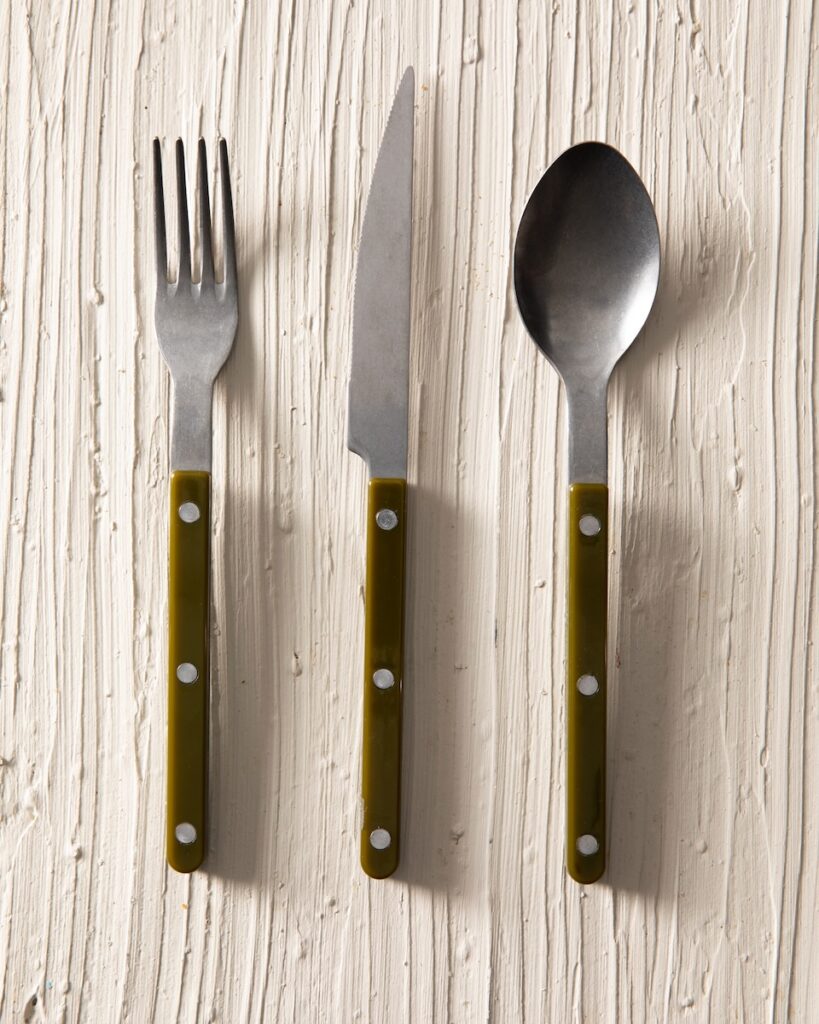When a single person sits down to dinner, sometimes a fork is just a fork. Guest editor Stephen Treffinger reflects on the habits of a confirmed bachelor and recounts how to set a table for one.
How to Set the Table for One
Were you to come to my home for dinner, you would find my place settings woefully limited or completely joyful, depending on your point of view. There would be no salad forks, no fish knives, no dessert spoons. Nor would your flatware, in all likelihood, match mine. Ditto the plates: my cabinets contain a mix of one-off Crate & Barrel finds mixed with stuff I picked up on my travels and various pieces of my own making.
Long before it was a thing, I was Grannycore. And not out of some ideology; rather, I have very much of a renter’s mentality, and feel like owning large sets of anything is too much of a commitment. (Paradoxically, I’ve lived in my current apartment for 35 years!) I rarely buy more than one of anything, and never more than two. The one exception is my pottery: because I make it myself and to my own specifications, I do use several of my own plates. But unless I become a blacksmith in the near future, I can’t forge my own flatware. Commitment issues aside, the problem is also that I can’t find one set or even a couple of sets of flatware that say “me.”
Should You Get Single Pieces or a Full Set?
Flatware for one generally falls into the ho-hum category, designed by committee to be as universally appealing (and therefore as bland) as possible. The early 21st century internet has exposed everyone to everything, so manufacturers either have to go full-on eccentric or totally featureless. And while I have longingly eyed place settings from British master David Mellor, his often contain 9 or more pieces. What on Earth would I do with all of those?
You can find single pieces at big box stores like Crate & Barrel and a few others. I currently have a couple of pieces from Muji. They do the trick but are certainly not visually inspiring. Another challenge is that the cost of individual pieces is often relatively expensive, a simple knife-fork-spoon trio costing more than a full place setting.
Maybe one has to cross the pond to get satisfaction? On a recent trip to Paris, I popped into Merci, a one-stop design shop for clothing, toiletries, accessories, and housewares. Surprisingly, they had no less than 15 sets of flatware available by the piece, and in a variety of styles —each quite different from the others, some more mod, others more trad. Perhaps the French appreciate the value of choice — or perhaps the fine art of dining alone. Vive la difference.

Among the objects and ideas that caught Stephen Treffinger’s eye during his Maison et Objet sejours in Paris was this set of Bistrot flatware from famed concept store Merci. Visit them in the Marais neighborhood on your next Parisian promenade or shop their English-language site online, where Bistrotis offered in several colors.
Story by Stephen Treffinger
Styling by Keith Recker
Photography by Dave Bryce
Subscribe to TABLE Magazine’s print edition.
